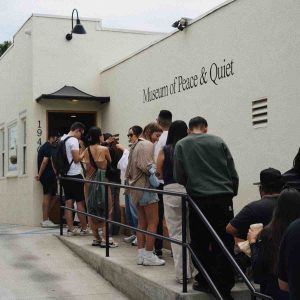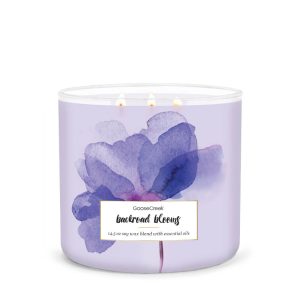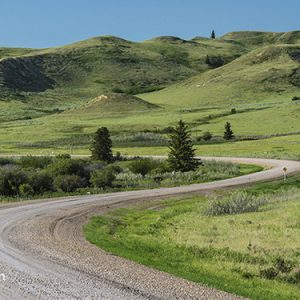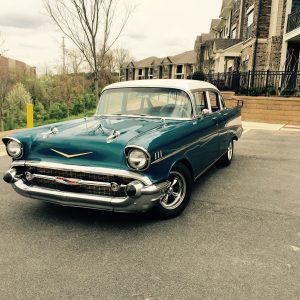
Ghost Stories & Grits: Haunted Backroad Adventures in the Deep South
The Deep South: a land of Spanish moss-draped oaks, sultry air thick with the scent of magnolias, and a history etched deep in the soil – a history that often refuses to stay buried. Beyond the charming antebellum architecture and the soul-soothing sounds of blues music lies a hidden world, a tapestry woven with tales of restless spirits, forgotten tragedies, and lingering echoes of the past. We’re not talking about tourist-trap ghost walks; we’re talking about navigating the backroads, venturing into the forgotten corners of Alabama, Mississippi, Louisiana, and Georgia, where the veil between worlds seems thin and the whispers of the dead are carried on the warm southern breeze. So, buckle up, grab a map (and maybe a rosary), and let’s embark on a road trip through the haunted heart of the Deep South.
Why the Deep South is So…Haunted?
Before we hit the asphalt, it’s essential to understand why this region seems to attract the supernatural like moths to a flickering lantern. The Deep South’s haunting reputation stems from a confluence of factors:
- A Troubled Past: From the horrors of slavery and the brutality of the Civil War to the Jim Crow era and the persistent struggles for racial equality, the region has witnessed immense suffering. Trauma leaves echoes, and the spirits of those who died violently or unjustly are often said to linger, seeking peace or justice.
- Deeply Rooted Superstitions: Voodoo, Hoodoo, and other folk beliefs, often blending African and European traditions, have thrived in the South for centuries. These practices, involving rituals, charms, and spirit communication, have arguably contributed to the region’s spiritual landscape.
- Isolation and Rural Character: The vast stretches of farmland, dense forests, and secluded swamps of the Deep South have allowed many communities to retain a strong connection to their past. Old homes, cemeteries, and forgotten battlefields are constant reminders of lives lived and lost. The solitude can amplify unsettling experiences.
- The Power of Storytelling: Southern culture is steeped in oral tradition. Ghost stories are passed down through generations, evolving and adapting with each telling. This constant retelling keeps the legends alive, arguably imbuing places with a palpable sense of history and haunting.
Fueling the Journey: A Grits Primer
No Deep South adventure is complete without embracing the culinary traditions, especially grits. These humble, ground corn kernels are more than just breakfast; they’re a symbol of Southern comfort and resilience.
Grits: A Quick Guide
| Type of Grits | Texture | Cooking Time | Best Uses |
|---|---|---|---|
| Stone-Ground | Coarse | 45-60 minutes | Flavorful, nutty, excellent side dish |
| Hominy Grits | Smooth | 20-30 minutes | Creamy, versatile, good with cheese |
| Instant Grits | Very Fine | 5-10 minutes | Quick breakfast, convenient, less flavor |
Route One: Alabama – Whispers from the Past
Our journey begins in Alabama, a state brimming with Civil War history and tales of spectral soldiers.
- Old Cahawba Archaeological Park (Orrville): Once the state capital, Cahawba is now a ghost town, literally and figuratively. Visitors report seeing spectral figures wandering the streets, hearing disembodied voices, and experiencing sudden drops in temperature. The haunting of the Crocheron Mansion is particularly well-documented.
- St. James Hotel (Selma): This historic hotel, dating back to the 1830s, claims to be haunted by several spirits, including Jesse James, who supposedly stayed there under an alias. Guests report encountering flickering lights, unexplained noises, and the sensation of being watched.
- USS Alabama Battleship Memorial Park (Mobile): Even floating museums can harbor ghostly inhabitants. Visitors have reported hearing voices in the engine room, seeing apparitions of sailors on deck, and feeling a general sense of unease, particularly in the areas where casualties occurred.
Grits Stop: Bluegill Restaurant in Spanish Fort offers a delicious shrimp and grits that will fortify you for your haunted adventures.
Route Two: Mississippi – Where the Blues and Ghosts Intertwine
Next, we head to Mississippi, the birthplace of the blues and a land where the sorrows of the past seem to echo in every delta breeze.
- McRaven Tour Home (Vicksburg): Known as “Mississippi’s Most Haunted House,” McRaven has witnessed numerous deaths and tragedies throughout its history. Visitors report encounters with the spirits of former residents, including a woman named Mary Elizabeth Howard, who was murdered on the property.
- King’s Tavern (Natchez): This historic tavern, dating back to the 1700s, is said to be haunted by the ghost of Madeline, a mistress of the tavern’s owner, Richard King. Legend says King murdered Madeline and her unborn child and buried them within the walls. People have reported seeing her apparition and hearing her cries.
- The Ricks-Maxwell House (Columbus): Said to be haunted by the ghost of Agnes Ricks, a woman who died tragically in the home. Witnesses report seeing her reflection in mirrors, hearing footsteps, and smelling her signature perfume.
Grits Stop: The Biscuit Shop in Natchez serves up some hearty cheese grits, perfect to combat those ghostly chills.
Route Three: Louisiana – Voodoo, Vampires, and the Spirits of New Orleans
Louisiana, with its rich blend of cultures and its history steeped in voodoo and French colonial influences, offers a truly unique haunting experience.
- The Myrtles Plantation (St. Francisville): Considered one of America’s most haunted homes, The Myrtles Plantation is said to be inhabited by at least twelve different ghosts, including Chloe, a slave who poisoned a cake, killing the plantation owner’s wife and children. Visitors report seeing her apparition, often wearing a green turban, and hearing the cries of children.
- Lalaurie Mansion (New Orleans): The infamous home of Madame Delphine LaLaurie, a socialite who tortured and murdered her slaves. The mansion is said to be incredibly haunted, with reports of screams, moans, and the feeling of being watched. While the mansion is not open to the public, simply walking past its imposing façade can be a chilling experience.
- Hotel Monteleone (New Orleans): This grand hotel in the French Quarter is home to several ghostly residents, including Maurice Begere, a child who died in the hotel and is often seen searching for his parents. Another famous spirit is that of a former hotel employee who continues to keep the hotel running, even in death.
Grits Stop: Mother’s Restaurant in New Orleans serves a “debris” and grits, a unique and delicious take on this Southern staple.
Route Four: Georgia – Battlefields and Buried Secrets
Our final destination is Georgia, a state marked by its pivotal role in the Civil War and its own share of chilling tales.
- Savannah: The entire city of Savannah is practically a ghost story in itself. With its cobblestone streets, historic squares, and abundance of cemeteries, Savannah is said to be one of the most haunted cities in America. The Marshall House, Pirates’ House, and Moon River Brewing Company are just a few of the many locations with documented paranormal activity.
- The Battlefield of Chickamauga: A site of intense fighting during the Civil War, Chickamauga is said to be haunted by the spirits of the soldiers who perished there. Visitors report hearing the sounds of battle, seeing ghostly figures, and experiencing a general sense of unease.
- Hay House (Macon): This opulent mansion is rumored to be haunted by the spirit of a former resident, Mrs. Johnston, who died tragically in the home. Visitors report seeing her apparition on the staircase and hearing her piano playing.
Grits Stop: The Flying Biscuit Cafe in Atlanta offers a variety of grits-based dishes, including their famous “Creamy Dreamy Grits.”
A Word of Caution: Respect the Spirits
While exploring these haunted locales, it’s crucial to remember that you are entering places with significant history and, according to many, lingering spiritual presences. Treat these locations with respect. Avoid trespassing, vandalizing, or engaging in any disrespectful behavior. Remember, these stories are often tied to real people and real tragedies.
Essential Gear for Your Ghostly Getaway
- Flashlight: For navigating dark backroads and dimly lit historic sites.
- Digital Recorder: To capture any unusual sounds or EVP (Electronic Voice Phenomena).
- Camera: To document your journey and potentially capture photographic evidence of the paranormal.
- Comfortable Shoes: You’ll be doing a lot of walking.
- Bug Spray: The Deep South is known for its mosquitoes and other insects.
- An Open Mind: Be receptive to the possibility of encountering something extraordinary.
- Grits Recipes: In case you want to recreate some of the delicious Southern dishes you encounter on your travels!
Beyond the Haunts: Embrace the Culture
While the ghost stories are certainly compelling, don’t forget to immerse yourself in the rich culture of the Deep South. Attend a blues concert, explore local art galleries, visit historical museums, and engage with the friendly locals. The South is more than just its ghosts; it’s a vibrant and complex region with a unique identity.
The Haunting Reality
Whether you believe in ghosts or not, the stories and legends of the Deep South offer a fascinating glimpse into the region’s history, its culture, and its enduring fascination with the unknown. So, pack your bags, grab your grits spoon, and prepare for a road trip through the haunted heart of America. Just remember to keep one eye on the road and the other on the shadows…you never know what you might encounter.

Additional Information
Ghost Stories & Grits: Deeper Exploration of Haunted Backroad Adventures in the Deep South
While the main article likely paints a vivid picture of spooky encounters and Southern charm, a deeper analysis reveals the rich tapestry woven from history, folklore, and cultural identity that fuels the enduring allure of “Ghost Stories & Grits” tours and experiences in the Deep South. This goes beyond simple ghost hunts; it’s about understanding the societal context that births and sustains these narratives.
1. The South’s Unique Historical Context: A Breeding Ground for Hauntings
The Deep South’s history is marred by trauma, injustice, and significant social upheaval. This volatile past acts as fertile ground for ghost stories.
- Slavery and its Legacy: The inhumanity of slavery resonates powerfully. Stories of tormented spirits of enslaved individuals are common, reflecting a collective guilt and unresolved societal wounds. Example: The “Iron Horses” plantation in Louisiana is rumored to be haunted by the spirits of enslaved people who were brutally forced to construct the plantation railway. These stories, passed down through generations of both Black and white communities, serve as a somber reminder of the region’s past.
- The Civil War and its Aftermath: The devastation of the Civil War and the subsequent Reconstruction era left deep scars on the Southern psyche. Tales of lost soldiers, destroyed homes, and economic hardship are ubiquitous. Example: Vicksburg, Mississippi, a city besieged during the Civil War, is riddled with ghost stories emanating from its battlefield and historic homes. Tours often focus on the experiences of soldiers and civilians caught in the crossfire, turning these historical sites into powerful loci of remembrance and grief.
- Racial Tension and Violence: Beyond slavery, persistent racial tension and acts of violence against minority communities contribute to the region’s spectral landscape. Hauntings are sometimes interpreted as manifestations of unresolved racial injustices. Example: While specific cases are often difficult to verify, certain locations associated with racial violence, like former sites of lynchings, are reported to be unusually active. This highlights the need for sensitivity and ethical responsibility when exploring these sites, acknowledging the pain and suffering they represent.
2. The Interplay of Folklore, Oral Tradition, and Performance
Ghost stories in the Deep South aren’t simply told; they are performed. The oral tradition is crucial in shaping and perpetuating these narratives.
- Storytelling as a Cultural Practice: The South has a rich tradition of storytelling, often centered around family, community, and shared experiences. Ghost stories become vehicles for conveying values, beliefs, and warnings.
- Performance and Embodiment: Storytellers often utilize expressive language, dramatic pauses, and embodied gestures to enhance the impact of their tales. This performative aspect creates a visceral experience for the audience, blurring the line between reality and fiction. Example: A ghost tour guide might mimic the gait and voice of a historical figure, amplifying the sense of immediacy and making the story more believable.
- Regional Dialect and Vernacular: The use of local dialect and vernacular adds authenticity and intimacy to the storytelling experience. This linguistic connection reinforces the listener’s sense of belonging and cultural identity.
3. The Economic Impact and the Ethical Considerations of Ghost Tourism
Ghost tourism is a growing industry in the Deep South, contributing to local economies but also raising ethical concerns.
- Economic Benefits: Haunted tours, attractions, and events generate revenue for local businesses, creating jobs and supporting tourism infrastructure. Example: Cities like Savannah, Georgia, and New Orleans, Louisiana, have built thriving tourism industries around their haunted reputations, attracting visitors from around the world.
- Potential for Exploitation: There is a risk of exploiting historical tragedies and the suffering of past populations for entertainment purposes. It’s crucial to approach these sites and stories with respect and sensitivity.
- Authenticity vs. Fabrication: The pressure to attract tourists can lead to the embellishment or fabrication of ghost stories. It’s important to distinguish between genuine historical accounts and sensationalized narratives. Responsible tour operators prioritize historical accuracy and ethical storytelling.
- Preservation of Historical Sites: Ghost tourism can incentivize the preservation of historical buildings and sites. However, it’s essential to ensure that these sites are treated with respect and that their historical significance is not overshadowed by the paranormal aspect. Case Study: Preservation organizations often partner with ghost tour companies to raise awareness and funding for the restoration of historic properties. This symbiotic relationship can be beneficial, but it requires careful management to avoid exploitation.
4. Beyond the Specter: Unveiling Deeper Psychological and Sociological Meanings
Ultimately, the enduring popularity of ghost stories in the Deep South speaks to deeper psychological and sociological needs.
- Confronting Mortality and the Unknown: Ghost stories provide a safe space to contemplate mortality and the mysteries of the afterlife.
- Processing Trauma and Grief: Sharing stories of loss and suffering can be a cathartic experience, allowing individuals and communities to process historical traumas and find solace in collective grief.
- Reinforcing Cultural Identity: Ghost stories serve as a powerful means of preserving and transmitting cultural values, beliefs, and traditions.
- Seeking Excitement and Adventure: For some, the thrill of the unknown and the potential for supernatural encounters provides an exciting escape from the mundane.
Conclusion:
“Ghost Stories & Grits” represents more than just spooky entertainment. It is a complex and multifaceted phenomenon deeply rooted in the history, culture, and collective psyche of the Deep South. A responsible and informed approach to this industry requires acknowledging the region’s historical baggage, prioritizing ethical storytelling, and recognizing the profound psychological and sociological significance of these enduring narratives. Only then can we truly understand the captivating allure of haunted backroad adventures in the Deep South.






